Most academics expect to move and change universities on occasion, as part of the normal pattern of life. But some of us – including yours truly – find a place we want to be and stay awhile. On May 9, Michigan Tech recognized those staff and faculty who had 25, 30, 35, and 40 years of service. Several people from the college were on that list, and I want to recognize them reaching these important milestones. A university pays attention to teaching and learning and to research — two labor-intensive activities. In other words, we cannot be successful without the dedicated efforts of the people who lead those efforts in education and knowledge generation. Each of the people on this list make a difference in all they do, and we are most thankful for it. Even more importantly, the students depend up on them. To be excellent for a long time is a difficult thing to do, but this group has done exactly that.
25 years: Michael Irish (VPA), John Jaszczak (PHY), Donald Kreher (MA), Sylvia Matthews (CSA), Ravindra Pandey (PHY), Lorri Reilly (CH), Kelley Smith (CH), Allan Struthers (MA), Vladimir Tonchev (MA)
35 years: Andrea Lappi (PHY) Karen Salo (CSA)
Both of the 35-year recipients are pivotal staff for CSA. Andy manages the day-to-day tasks as department coordinator in Physics, while Karen is the heart and sole of administration in the college. But everyone here contributes to making the college work. I want to congratulate everyone for their contributions and for their efforts – and for making it to 25 or 35 years! Thanks to each and every person!
FYI – for truth in advertising purposes, that’s me in the picture with Karen Salo – as I now have 30 years of service to Michigan Tech. The other picture shows Ravi Pandey and Andy Lappi from Physics.
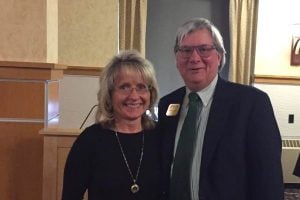
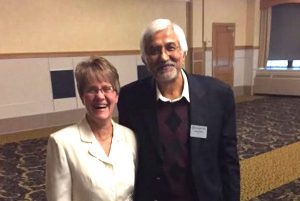
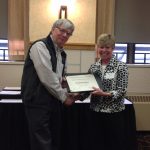
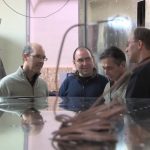

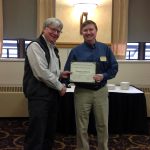
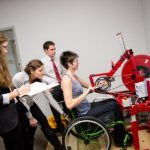
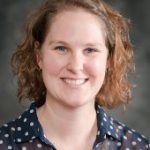

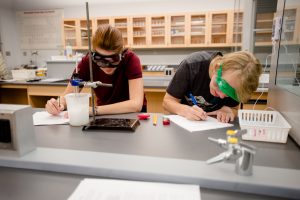 The pace of the academic semester picks up in mid April, with students and faculty alike realizing that the end of the semester is looming. Students hustle to complete projects and papers, but I am especially impressed by the number of research activities in which CSA undergraduates are involved.
The pace of the academic semester picks up in mid April, with students and faculty alike realizing that the end of the semester is looming. Students hustle to complete projects and papers, but I am especially impressed by the number of research activities in which CSA undergraduates are involved.


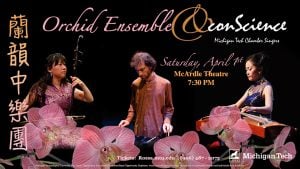
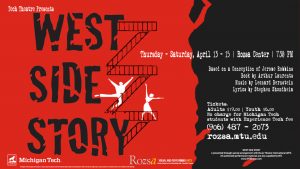
 Kathy Halvorsen
Kathy Halvorsen Anne Beffel
Anne Beffel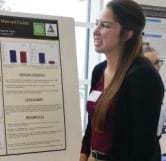 Stephanie Dietrich
Stephanie Dietrich
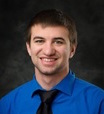 Two KIP students-
Two KIP students-  Considering that Michigan Tech offers no degrees in music, the variety of quality musical groups here is quite amazing. Jazz and vocal groups, an orchestra and bands — students can participate in all of these, often in more than one venue. But for the typical student here, the
Considering that Michigan Tech offers no degrees in music, the variety of quality musical groups here is quite amazing. Jazz and vocal groups, an orchestra and bands — students can participate in all of these, often in more than one venue. But for the typical student here, the 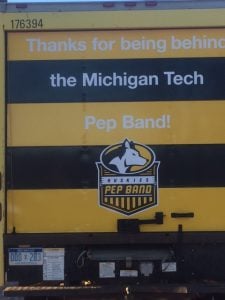
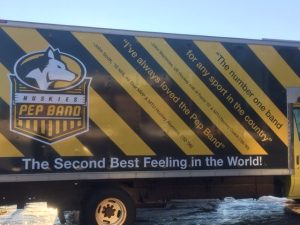
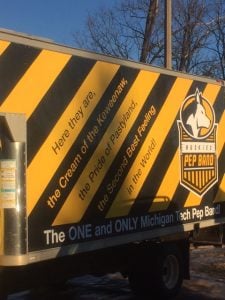
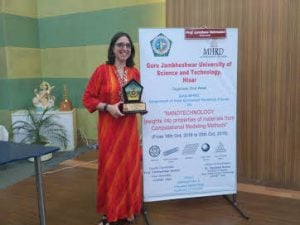
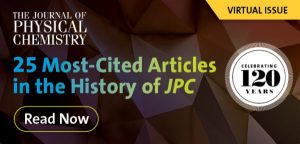


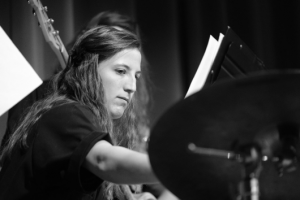 The drummer is Libby Welton, a December 2016 MTU grad in Mechanical Engineering. She started her first job in Wausau, WI immediately after the tour was over.
The drummer is Libby Welton, a December 2016 MTU grad in Mechanical Engineering. She started her first job in Wausau, WI immediately after the tour was over.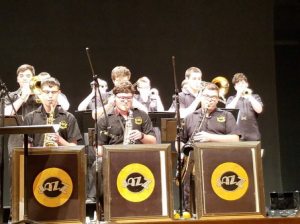
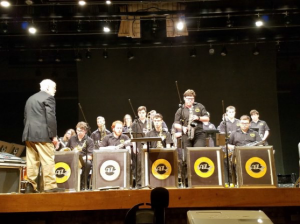
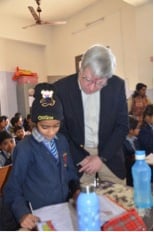 I’ve recently returned from a trip to India – my 6th in the past eight years. The purpose of the trips has been to develop connections between faculty and universities there and at Michigan Tech.
I’ve recently returned from a trip to India – my 6th in the past eight years. The purpose of the trips has been to develop connections between faculty and universities there and at Michigan Tech.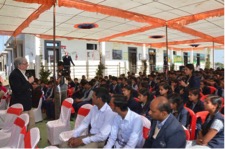
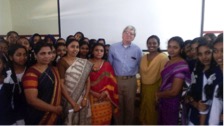 At each place, I was warmly received, as has been true during each stop in my earlier visits. Normally I deliver a seminar on a topic appropriate to the university; typically I have talked about the societal implications of nanoscale science and engineering. This subject matches the world-wide interest in nanotechnology, but often the audience hears for the first time the perspective of a historian of technology on this topic. The resulting discussions have been useful and interesting – and provide a springboard to examine ways in which Tech’s faculty and research activities might align with faculty and students at the universities in India. There are many other areas where the research interests of faculty in India and the U.S overlap, and developing collaborative arrangements built from that common int
At each place, I was warmly received, as has been true during each stop in my earlier visits. Normally I deliver a seminar on a topic appropriate to the university; typically I have talked about the societal implications of nanoscale science and engineering. This subject matches the world-wide interest in nanotechnology, but often the audience hears for the first time the perspective of a historian of technology on this topic. The resulting discussions have been useful and interesting – and provide a springboard to examine ways in which Tech’s faculty and research activities might align with faculty and students at the universities in India. There are many other areas where the research interests of faculty in India and the U.S overlap, and developing collaborative arrangements built from that common int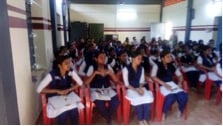 erest are the primary target of these visits. This trip, Michigan Tech and NITC signed an agreement to strengthen shared research programs in atmospheric science and applied physics. Similar linkages seem very likely to emerge from the visits to AISECT and IIT Bombay as well.
erest are the primary target of these visits. This trip, Michigan Tech and NITC signed an agreement to strengthen shared research programs in atmospheric science and applied physics. Similar linkages seem very likely to emerge from the visits to AISECT and IIT Bombay as well.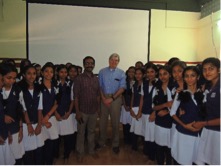 e so proud of the students — as they should have been! The students had prepared a science fair for me, as well as crafts exhibit. And after a short talk from me, they asked questions for an hour about all kinds of topics. It was a wonderful experience, as was the second school visit, this time to the Government Girls High School in Balussery in Kerala State. I met with a group of 10th graders from a gifted and talented program – and they certainly lived up to that billing! Self-assured and confident, these young women asked me about the differences between India and the U.S., about inequality, democracy and technology, and about the differences and similarities between our two countries. I was honored to be the first American to visit them, and urged them to never let anyone suggest they could not do something simply because they were women. Impressive!
e so proud of the students — as they should have been! The students had prepared a science fair for me, as well as crafts exhibit. And after a short talk from me, they asked questions for an hour about all kinds of topics. It was a wonderful experience, as was the second school visit, this time to the Government Girls High School in Balussery in Kerala State. I met with a group of 10th graders from a gifted and talented program – and they certainly lived up to that billing! Self-assured and confident, these young women asked me about the differences between India and the U.S., about inequality, democracy and technology, and about the differences and similarities between our two countries. I was honored to be the first American to visit them, and urged them to never let anyone suggest they could not do something simply because they were women. Impressive!